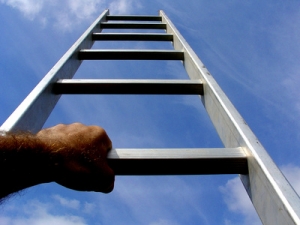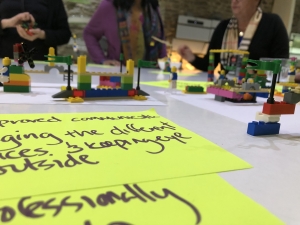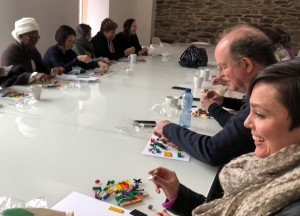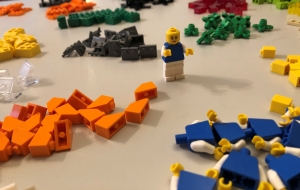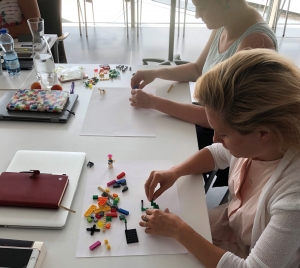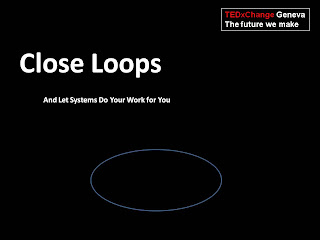Some of us are coming up to our first major break of the year, after a busy flurry of January, February and March. The nice long spring break, when email slows down a little and our work obligations are put on temporary hold with our out-of-office messages, creates a welcome breathing space which encourages us to reflect on what has happened so far and what we might want to strengthen or do differently in the coming months to make 2019 overall a productive year.
First of all, how are your New Year’s Resolutions going? It’s April! Whether you believe in New Year Resolutions or are someone who just thinks about the “clean slate” that a new year provides, you might ask yourself how its going. Are you successfully doing-it-yourself or do you need to get some help?
I have been enjoying reading Marshall Goldsmith’s book Triggers: Creating Behavior That Lasts – Becoming the Person You Want to Be which offers some easy-to-implement tools for behavior change including Daily Questions. These are questions that you create and ask yourself every day. To get started he has a set of interesting initial questions (e.g. Did I do my best to set clear goals?) and advocates using the “Did I do my best….” stem for each question rather than asking yourself how well you performed so that you are measuring effort rather than performance. Doing this daily helps keep your goals – the most important things you want to engrain as habits – front of mind, and helps you see trends. Although you can set up an accountability “buddy” for this process (and of course there’s always an app), you can effectively do this yourself.
Another way to go about this is to get some help. This might include engaging a coach – peer (e.g. in your workplace) or external. If getting a coach sounds good, its helpful before you start to think through your motivations for engaging outside support and your own commitment level to the doing the work that comes along with it (yes, this too involves work!)
Here are some considerations we can offer from our experience with coaching that might help think through what’s best:
- Start with your own reflection about the coaching process: It is tempting to think mostly about what you want to change about your behavior – be a better team leader, manage your time or productivity more effectively etc. – but don’t forget to think about the coaching process itself. Ask yourself some questions about this such as: What individual challenges will I face in this coaching process? What should my coach know about me as a partner in the coaching process? How will I embed this coaching process into my current work (both the sessions and the practice)? Write this down somewhere.
- Prepare to work outside the coaching sessions: For coaching to be most effective, you will need to do some work in between the coaching sessions and you will need to agree with your coach what you will do and honour your commitments to yourself. This work might include reflections on past behaviours, observations in situ, testing new tools or approaches, videoing a demonstration, etc. This takes us back to question 1 – are you already over committed? Will you have time to focus on this?
- You will be getting some feedback, is that ok? As a part of the coaching, there will be some diagnostic elements, this might come from you, your coach or others (for example 360 degree feedback). As you try things, you will also get feedback. The questions asked to you can be highly appreciative and based on what is working and what you could be doing differently, and still, this might challenge in unexpected ways your current paradigm of yourself in your workplace. Your coach will work to create a safe environment, and still, think about this – will it be ok? Prepare to share some of your thinking about how you respond to feedback with your coach and what you might want/need to make sure this is effective.
- Things will be changing, so write things down: In coaching processes, many things are changing simultaneously. You will be trying new approaches, as a result your external environment might change, and therefore what you need to do next in your coaching might change. This can be a very dynamic process, and probably not linear. Even with a good outline for your coaching process, the process needs to be responsive to your needs and in the end might look very different to what you or even your coach expected. This also depends on the period of time over which you have your coaching – if it is a longer period then it is more likely that this change will occur. How and where will you record your thinking, new ideas, and plans? Your coach might give you a manual or journal, or you might set up one of your own. It is helpful to try to keep things in one place so that you can look back at the changes, and see the trends. A blank book can work, but you might also consider making yourself some templates that you can use in all situations. These could ask questions like: What exercise did we do this week? What did I get from this/what were the key points? What will I do for my homework? When will I do this? Your coach might keep a similar record and use that to engage with you. It’s worth writing things down as these processes often produce subtle changes that are hard to pick out and remember in the sometimes deafening thrum of our daily work.
Whether you do-it-yourself or engage a coach, both have the potential to be incredibly instrumental for helping you make the changes you want to see in the future. Both do take effort on your part and at the same time aim to ultimately make things better, more effective, and more enjoyable. As you take your first steps up this ladder of change, looking out at the rest of your year, keep the vision firmly in mind of this next version of you!

